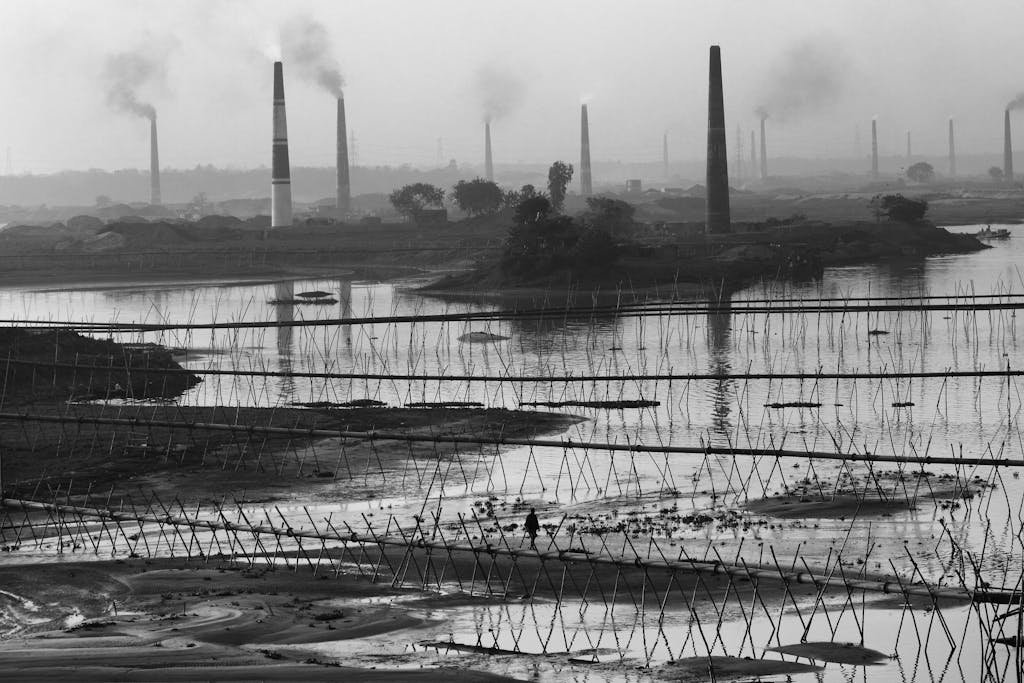5 Key Differences Between Water and Air PDF
Differences Between Water and Air: Environmental pollution is one of the most serious challenges faced by the world today. Among all types, air and water pollution are the most harmful to life and the environment. For students studying science, especially in schools and competitive exams like NEET or UPSC, understanding the sources of air and water pollution, their causes, consequences, control measures, and policies is not only important for exams, but also for becoming responsible citizens of tomorrow. Water and air are both essential for life, but they have distinct properties and roles in the environment. Water is a liquid at room temperature, characterized by its ability to dissolve many substances, making it a universal solvent.
It has a high heat capacity, which helps regulate temperature in living organisms and environments. Water molecules are cohesive, leading to surface tension that supports small organisms and plant life. In contrast, air is a mixture of gases, primarily nitrogen and oxygen, with a low density and viscosity. It is essential for respiration in terrestrial organisms and facilitates the diffusion of gases.
Studying the 5 Key Differences Between Water and Air PDF is crucial for several reasons. It enhances our conceptual clarity and helps us understand how different organisms are adapted to their environments. It also aids in competitive exam preparation, as comparative questions are common. To study the differences between water and air effectively, one should use charts and diagrams can be helpful. Regular practice and revision reinforce understanding. Here below we have given 5 Key Differences Between Water and Air PDF

5 Key Differences Between Water and Air PDF
Pollution means the presence of harmful or toxic substances in our natural environment. When the air we breathe and the water we drink get contaminated due to human or natural activities, it is called air and water pollution.
Air pollution happens when harmful gases, dust, smoke, or chemicals are released into the air, making it unsafe to breathe. Common sources include vehicles, factories, burning of garbage, and even forest fires. Water pollution, on the other hand, occurs when harmful substances like sewage, industrial waste, chemicals, or plastic are dumped into rivers, lakes, or oceans.
These two types of pollution are not just dirtying our environment—they are posing a risk or hazard to human health, wildlife, agriculture, and even climate.
| Water | Air |
|---|---|
| The components of water are hydrogen and oxygen which are chemically combined in a fixed ratio of 1:8 by mass. | The main components of air are nitrogen, oxygen, carbon dioxide, and water vapor which are not chemically combined. |
| Water is a liquid at room temperature. | Air is a gas mixture at room temperature. |
| Water is composed of H₂O molecules. | Air is composed mainly of nitrogen, oxygen, and other gases. |
| The precise formula H2O is used to describe a water molecule. | Air cannot be represented by any chemical formula. |
| Water is essential for hydration and various biological processes. | Air is essential for respiration and various life processes. |
| Water has a definite volume but no fixed shape. | Air has neither a definite volume nor a fixed shape. |
| Water exists in oceans, rivers, lakes, and other bodies. | Air is present in the atmosphere surrounding the Earth. |
Prevention and Control of Water and Air Pollution
Controlling pollution is not just the responsibility of the government, but also every individual, especially students who are the future change-makers. Here are some effective control measures:
Air Pollution Control:
- Use of electric vehicles and public transport
- Planting more trees
- Use of clean and renewable energy (solar, wind)
- Ban on burning crop residue and garbage
- Strict emission norms for industries
- Air filters and purifiers in homes and schools
Water Pollution Control:
- Proper treatment of industrial and domestic waste
- Rainwater harvesting
- Reuse and recycling of water
- Use of eco-friendly cleaning products
- Reducing plastic use
- Afforestation and protection of wetlands
Frequently Asked Questions (FAQs)
1. What are the main sources of air and water pollution?
The main sources include vehicles, factories, sewage, chemical fertilizers, burning of waste, and plastic dumping.
2. Why is air and water pollution considered a hazard?
Because it poses health risks like asthma, cancer, and infections, and damages the environment, economy, and biodiversity.
3. What are some control measures for environmental pollution?
Control measures include waste treatment, renewable energy use, banning plastics, tree plantation, and pollution control policies.
4. How do policy instruments help in controlling pollution?
They provide legal rules, enforce penalties, and monitor pollution levels through Pollution Control Boards and clean-up missions.
5. Is air pollution worse than water pollution?
Both are dangerous. Air pollution causes immediate respiratory problems, while water pollution leads to long-term health and ecological damage.
Similar Article’s
Sources of air and water pollution, Air and water pollution is risk or hazard, Environmental pollution: types, causes, effects and control air and water pollution, Causes consequences and control of air and water pollution, Policy instruments for controlling water and air pollution, Is air pollution worse than water pollution, Describe the sources of air water pollutants and its impacts on environmental, Prevention and control of water and air pollution
